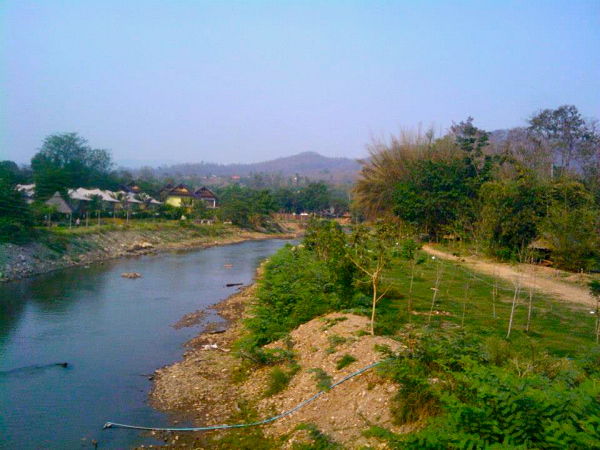When in Thailand, make sure to catch a performance of Nang Yai. It is one of Thailand’s traditional and high art forms that can trace its roots to as far as the Ayudhaya period when kings and leaders would entertain themselves with nang yai shows. It is so popular that Buddhist monk Mahanang mentioned it in his poem, Bunnovat Khamcham.
Combined Art Forms
Nang yai combines several different art forms. First, there is the art of creating the puppets. Nang Yai puppets are typically large sized figures, weighing at least three to four kilograms and is made out of cow or buffalo hide. Smaller figures, used in shadow play called nang talung weigh less. “Nang” means “skin or hide”, which refers to the material used to create the puppets.
Historically, the materials used in making these puppets are gruesome. Supposedly the bigger puppets are made from cow or buffalo that has died in a violent or accidental manner, while the smaller ones are from the soles of the feet of the deceased puppet master. Whether or not these traditions are followed today is quite unclear.
Superb Craftsmanship
These puppets are intricately cut and put together, sometimes comprising of several pieces to include the moving arms and legs. The puppets are supported and manipulated by mounting them on bamboo poles. Most viewers see only the shadows of these puppets, but behind the scenes they are beautiful and colorful. You can even say that these can be mounted in museums for their exquisite craftsmanship.
Most puppets are not for sale, but designs made in paper are patterned after them and are popularly sold as souvenirs or greeting cards.
True Performers
Second, there is the performance. The people manning the puppets don’t just hold them and move when they have to. These people are performers in their own right, with the puppets acting as part of them and not as a prop.
Epics and Folk Tales
Third, there is the story. Historically, nang yai performances are based on the stories of the Ramakien, Thailand’s version of the Indian Ramayana. These days, many performances are based on folk stories or poems, while more contemporary artists make use of different stories altogether.
Fourth, there is the accompaniment. Traditionally, nang yai performances are accompanied by a combination of songs and chants to help tell the story. There are narrators who weave the story as it evolves on the ‘screen’. Music is played live by an ensemble to provide mood and atmosphere as the story progresses. Instruments like the piphat and ranat (similar to a xylophone) are commonly used, along with drums and wind instruments.
Ongoing Tradition
One of the most well-known nang yai personalities is Sucharf Sapsin, a man who not only makes puppets, but also writes stories for these plays, and acts as a narrator and voice over during performances. His contributions to the world of shadow puppetry gave him the status of a national artist. His home in Nakhon Si Thammarat is now a Shadow Puppet Museum. Visitors can watch 20-minute performances, as well as participate in workshops about shadow puppetry.
Shadow puppet performances happen across the country, particularly in festivals and events held in temples. For regular performances, the Nang Yai Wat Khanon Troupe has shows at the Wat Khanon, Ratchaburi. Here you can witness traditional performances featuring stories from the Ramakien. One of the halls has been converted into a museum that showcases around three hundred leather puppets, many of which are centuries old.
Check out this video for Nang Yai Wat BanDon:





